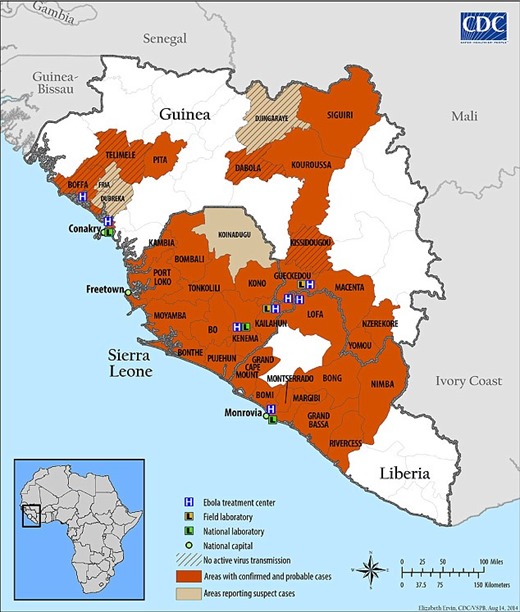Sven Longshanks
Daily Stormer
September 2, 2014

The Ebola virus is rapidly mutating at such a fast rate, that our current treatments for it may soon be obsolete.
The more we waste our medical advances trying to treat our Black competitors for resources and territory, the less effective those remedies will be on our own people, should they contract it.
Whichever way you look at it, it is irresponsible and selfish of White Doctors to go to Africa and spite nature by treating these ungrateful Negroes. They are not just risking contaminating our own countries when we have to go over there and rescue them when they catch it themselves, but they are actively doing all they can to make what treatments we do have ineffective.
Researchers claim the Ebola virus disease (EVD) is rapidly and continually mutating, making it harder to diagnose andtreat.
A study of the initial patients diagnosed with the virus in Sierra Leone revealed almost 400 genetic modifications.
And it could be detrimental not only to current treatments, but also to future vaccines that are in the works.
The team of researchers, led by the Broad Institute in Massachusetts and Harvard University, analysed more than 99 Ebola virus genomes.
These were collected from 78 patients diagnosed with Ebola in Sierra Leona in the first 24 days of the outbreak.
Their findings, reported in the journal Science, could have important implications for rapid field diagnostic tests
The team found more than 300 genetic changes that make the 2014 Ebola virus genomes distinct from the viral genomes tied to previous Ebola outbreaks.
They also found variations in the genome sequence indicating that, from the samples analysed, the outbreak started from a single introduction into humans, subsequently spreading from person to person over many months.
To accelerate response efforts, the research team released the full-length sequences on the National Center for Biotechnology Information’s (NCBI’s) DNA sequence database, in advance of publication.
This means the data is available to the global scientific community.

‘By making the data immediately available to the community, we hope to accelerate response efforts,’ said co-senior author Dr Pardis Sabeti, a senior associate member at the Broad Institute and an associate professor at Harvard University.
‘Upon releasing our first batch of Ebola sequences in June, some of the world’s leading epidemic specialists contacted us, and many of them are now also actively working on the data. We were honored and encouraged.
‘A spirit of international and multidisciplinary collaboration is needed to quickly shed light on the ongoing outbreak.’
The 2014 Ebola outbreak is unprecedented both in its size and in its emergence in multiple populated areas.
Previous outbreaks had been localised, mostly to sparsely populated regions of Middle Africa, with the largest outbreak in 1976 reporting 318 cases.
By comparison, the 2014 outbreak has manifested in the more densely-populated West Africa, and since it was first reported in Guinea in March 2014, 2,240 cases have been confirmed with 1,229 deaths as of 19 August.
Dr Augustine Goba, Director of the Lassa Laboratory at the Kenema Government Hospital and a co-first author of the paper, identified the first Ebola virus disease case in Sierra Leone.
‘We established surveillance for Ebola well ahead of the disease’s spread into Sierra Leone and began retrospective screening for the disease on samples as far back as January of this year,’ said Dr Goba.
‘This was possible because of our long-standing work to diagnose and study another deadly disease, Lassa fever.
‘We could thus identify cases and trace the Ebola virus spread as soon as it entered our country.’
Negroes already have a way of dealing with diseases like this, they breed 6 to 8 times more offspring than we do and they do not need us to risk poisoning our own countries, in order for them to survive in theirs.

